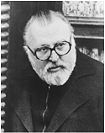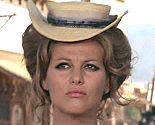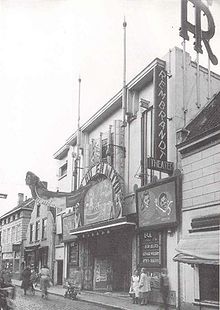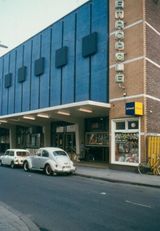User: Scherpschutter: Difference between revisions
No edit summary |
No edit summary |
||
| Line 316: | Line 316: | ||
---- | ---- | ||
{| align="right" style="border:1px solid gray; padding:5px; margin:5px;" | | {| align="right" style="border:1px solid gray; padding:5px; margin:5px;" | | ||
|[[File:GiornidellIra.jpg| | |[[File:GiornidellIra.jpg|230px]] | ||
|- | |- | ||
|<center>'''[[Giorni dell'ira, I|DAY OF ANGER]]''' (1967)</center> | |<center>'''[[Giorni dell'ira, I|DAY OF ANGER]]''' (1967)</center> | ||
| Line 351: | Line 351: | ||
{| align="left" style="border:1px solid gray; padding:5px; margin:5px;" | | {| align="left" style="border:1px solid gray; padding:5px; margin:5px;" | | ||
|[[File:Vlcsnap-2012-09-21-14h17m29s108.png| | |[[File:Vlcsnap-2012-09-21-14h17m29s108.png|260px]] | ||
|} | |} | ||
| Line 361: | Line 361: | ||
{| align="right" style="border:1px solid gray; padding:5px; margin:5px;" | | {| align="right" style="border:1px solid gray; padding:5px; margin:5px;" | | ||
|[[File:Vlcsnap-2012-09-19-18h59m24s62.png| | |[[File:Vlcsnap-2012-09-19-18h59m24s62.png|260px]] | ||
|- | |- | ||
|[[File:Vlcsnap-2012-09-21-14h22m43s199.png| | |[[File:Vlcsnap-2012-09-21-14h22m43s199.png|260px]] | ||
|} | |} | ||
Revision as of 14:46, 21 September 2012
- Position: Editor
 |
My Reviews:
- 7 Women for the MacGregors
- 100 Rifles
- 5000 Dollars on an Ace
- $100,000 for Ringo Review
- 10.000 Dollars for a Massacre
- Ace High
- Adiós Sabata Review
- A Bullet for Sandoval
- A Genius, two partners and a dupe
- A Man called Sledge
- A Pistol for Ringo
- A Reason to Live, a Reason to Die Review (Scherpschutter)
- A Stranger in Paso Bravo
- A Stranger in Town
- A Train for Durango
- Ace High Review
- Adios Gringo
- A Long Ride from Hell
- Alive or preferably Dead
- Among Vultures
- And for a Roof, a Sky full of Stars
- And God said to Cain
- Any Gun Can Play
- Apache Woman
- Arizona Colt
- Bad Man's River
- Bandidos
- Ben and Charlie
- Beyond the Law Review
- Blindman
- Boot Hill
- Botte di Natale - Troublemakers Review
- Buffalo Bill, Hero of the Far West
- Bury them deep
- Cannon for Cordoba
- Comanche Blanco
- Compañeros (Vamos a matar, Compañeros!)
- Cowards don't Pray
- Cry onion (Cipolla Colt)
- Dakota Joe (A Man and a Colt) Review
- Death Played the Flute Review
- Death Rides a Horse
- Death Rides Alone (Con lui cavalca la morte) Review
- Death Sentence
- Don't turn the other Cheek
- Don't wait Django, shoot!
- Django
- Django Shoots First
- Django the Bastard
- Django, the Last Killer
- Drummer of Vengeance (Il giorno del giudizio) Review
- Duello nel Texas - Gringo
- Durango is coming, pay or die
- El Condor
- Fifteen Scaffolds for a Killer
- Find a Place to Die
- For a Few Dollars More
- Fort Yuma Gold
- Four Dollars of Vengeance
- Freddy und das Lied der Prairie
- Get a Coffin Ready! | Viva Django!
- God forgives... I don't! Review
- Gringo, getta il Fucile (The Tough One)
- Gunman's Hands (Ocaso de un Pistolero) Review (Scherpschutter)
- Hannie Caulder
- Have a Good Funeral, My Freind ... Sartana Will Pay
- Heads or Tails (Testa o Croce) Review
- I am Sartana, your Angel of Death
- I came, I saw, I shot review
- If you meet Sartana, pray for your Death
- It can be done, Amigo
- Last of the Badmen
- Light the Fuse... Sartana is coming
- Little Rita of the West
- Long Days of Vengeance
- Manitou's Shoe
- Massacre at Grand Canyon
- Massacre Time
- Matalo! Review
- May God forgive you... I won't
- Minnesota Clay
- My Name is Nobody Review
- Rampage at Apache Wells / Der Ölprinz
- Red Blood, Yellow Gold
- Requiem for a Gringo
- Return of Sabata Review
- Return of the Seven
- Roy Colt and Winchester Jack Review
- Run Man Run Review
- Sartana kills them All
- Savage Pampas
- Scalps, venganza india
- Seven Guns for the MacGregors
- Seven Winchesters for a Massacre
- Shalako Review
- Silver Saddle Review
- Some Dollars for Django Review
- Sonny and Jed / La Banda J&S
- Starblack
- Sukiyaki Western Django
- Take a Hard Ride
- Taste for Killing
- Taste of Death (Quanto costa morire) (with Silver Wolf)
- Tepepa
- Tex and the Lord of the Deep
- Texas Addio
- The Deserter
- The Five Man Army
- The Forgotten Pistolero
- The Gatlin Gun / Machine Gun Killers
- The Good, the Bad and the Ugly
- The Grand Duel
- The Great Silence
- The Greatest Robbery in the West Review
- The Hellbenders
- The Hills run red
- The Hunting Party
- The Legend of Frenchie King / Les Pétroleuses Review
- The Long Day of the Massacre
- The Man from Oklahoma
- The Mercenary
- The Moment to Kill
- The Pitiless Three (El sabor de la Venganza)
- The Pyramid of the Sun God review
- The Price of Power
- The Ruthless Four (Ognuno per sé)
- The Secret of Captain O'Hara
- The Specialists
- The Spikes Gang
- The Stranger Returns
- The Taste of Violence / Le Goût de la Violence
- The Tramplers
- The Treasure of the Aztecs Review
- The Unholy our (Ciakmull
- The White, the Yellow, the Black
- They call me Cemetery
- They call me Hallelujah
- They call me Trinity
- This Man Can't Die
- Thunder over El Paso (I Senza Dio) Review
- Tierra Brutal / The Savage Guns
- Treasure of Silver Lake
- Trinity is still my Name
- Today It's Me... Tomorrow It's You
- Tomb of the Pistolero Review
- Trinity sees Red (La Cólera del Vento)
- Two Mules for Sister Sara
- Scalps, venganza india Review
- Vengeance!
- Vengeance is Mine / One hundred thousend Dollars per Killing
- Villa Rides Review
- Wanted
- What am I doing in the Middle of the Revolution
- White Fang and the Hunter (With Phil H)
- Winnetou and Shatterhand in the Valley of Death
- Winnetou the Warrior (Winnetou I)
- Winnetou und das Halbblut Apanatschi
- Winnetou: Last of the Renegades (Winnetou II)
- Winnetou: Thunder at the Border (Winnetou und sein Freund Old Firehand)
- Winnetou III : The Desperado Trail
DVD Reviews:
- Les 100 Fusils (100 Rifles) - DVD Review
- Django - Unbarmherzig wie die Sonne DVD Review
- Long Days of Vengeance (German X-Rated Kult DVD)
- For a Few Dollars More MGM S.E. DVD Review
- Fort Yuma Gold DVD Review (Wild East)
- Navajo Joe DVD Review (Wild Side)
- Pistoleros DVD Review (Wild East)
- Sartana’s here… trade your pistol for a coffin DVD Review (French SNC/GroupeM6)
- Silver Saddle Koch Media DVD Review
- Tempo di Massacro DVD Review
- The Man from Nowhere DVD Review (Wild East)
- Vengeance Trail DVD Review
Other articles:
- Giuliano Gemma
- Fernando Sancho
- Nicoletta Machiavelli
- Gianni Garko
- GBU - The Extras
- Introduction (with Lindberg)
- Introduzione (Italiano)
- Introductie (Nederlands)
- The Man with No Name (Character)
- Peplum goes Zapata: Figlio di Spartacus
- Django (character)
Essays
Translations (Dutch>English)
- The Tiger from The River Kwai Review (Dutch/English) (
- The Revenge of Ringo Review (Dutch/English)
- Halleluja and Sartana Strike Again! Review (Dutch/English)
    
| |
|
THE CINEMAS OF MY YOUTH
Chicago Theatre – Eindhoven
Chicago was the most fashionable cinema of Eindhoven. Most blockbusters premiered here. The cinema was build in 1913 but renovated several times; the most important renovation took place in 1945, immediately after the war, when the theatre got a new façade, a very high one without windows. This façade was used as some kind of giant advertising pillar. On the other side of the shopping street was a warehouse with a restaurant on the third or fourth floor. Once they had attached a gigantic 007 to the façade and from my seat near the window I looked him right in the eye. The name of the movie was written (in Dutch) above his head: You only live Twice. I asked my mother what this was supposed to mean. Did you live twice? Only twice? She had no idea. Remarkably, the theatre was composed of two separate buildings, one with the ticket office and the entrance hall, and another where the films were actually shown; they were connected by a long corridor with a foyer, a small bar and a series of show windows with info on films that were expected to be on the program soon. Walking through this beautiful corridor gave you the idea you were part of the beau monde. It had 833 (very comfortable) seats. It wasn’t the largest cinema in town, nor was the one with the largest screen. But it was the first cinema in Holland with stereo sound (guess why) and until 1980, when the second building (where the films were shown) was completely destroyed in a fire, it was known as one of Holland’s finest cinemas and the one with the best sound. Westerns were a rarity in the Chicago Theatre, still I saw my first western here: Mackenna’s Gold. I guess it was during a Christmas or Easter holiday, since the cinema was loaded with boys of my age, and a Titanic scale agitation broke out when Julie Newmar took off her clothes and jumped into the water. I also saw my first spaghetti western in this theatre, the chopped-up version of Once upon a Time in the West.
Rembrandt Theatre Eindhoven
The Rembrandt theatre was, so to speak, the direct opposite of the Chicago theatre: the most ‘popular’ cinema of Eindhoven. It was also the largest: it had 1300 seats, but they were far less comfortable than the seats in Chicago. Still it always felt good to watch a movie here. There were no attendants telling you to be quiet or to put out your cigarette. Not that I ever smoked, a true fan won’t ever do that in cinema, but you really had the idea everybody was welcome here. I saw Return of Ringo, my second spaghetti western, and For a Few Dollars More in this theatre, along with several other spaghetti and non-spaghetti westerns. The cinema was known for their rather flashy painted boards above the entrance, showing scenes of the movie. I remember Death rides a Horse was shown here, and when I close my eyes I still see the enormous painting with the Dutch title ‘De Dood kwam te Paard’, which sounded, like the English title, quite bizarre, but was therefore the most beautiful title of a movie I had ever heard of. The problem was I wasn’t allowed to see it: it had an ’18 rating’ and I was only thirteen or fourteen years old. In 1960 the owner bought the adjacent premises (the building right of the theatre on the photo) for a second cinema. This cinema was smaller but offered more comfort, and was called ‘Select’. It was intended for art house movies and European (mainly Italian and French) mainstream cinema, but occasionally a western was shown here. I saw both The Wild Bunch and The Mercenary in the Select theatre in the early seventies (both must have been reruns because I was too young for them when they were first released), and the uncut version of Once upon a Time in the West was also shown for the first time in Eindhoven in this theatre. Both Rembrandt and Select were transformed in a multiplex cinema in the mid-seventies. This complex was closed down thirty years later and replaced by apartment building. The world is falling apart.
Cinema Parisien Eindhoven
Like the Select theatre, this Dutch Cinema with a French name (it means ‘Parisian Cinema’) was intended for commercially less interesting films, but it was used for this purpose only for a brief period and soon became a typical ‘popular cinema’, which exclusively programmed comedies and action movies. In spite of all this it still had attendants in uniform who showed you to your place and became very angry when someone dared to take another (more expensive) seat after the film had started. It was in this cinema that I witnessed how the operator stopped the movie because one of the visitors refused to put out his cigarette. I think the movie was A Few Dollars for Django, but I’m not sure. I remember the incident better than the movie. I saw only a handful of spaghettis in this theatre during their regular program, but among them are Vamos a Matar, Compañeros and The Good, the Bad and the Ugly. Still this is the theatre I identify most with the genre because of their midnight showings of spaghetti westerns in the 70s. I must have seen more than twenty spaghettis during these showings, which also offered me the chance to pick up movies I wasn’t allowed to see ten years before, such as Death rides a Horse. There were nearly always a few drunks in the audience, and occasionally the atmosphere was as heated among them as it was on the screen. Cinema Parisien was rather small, it had only 350 seats. On the photo you can see the façade in the middle on the right, somewhere between the elephant (a toyshop) and Tik Tak (a bar). The photo was taken in 1977. When you look left of 'the elephant', you can spot the modern multiplex Rembrandt building, openened shortly before. Cinema Parisien was one of the last ancient cinemas resisting the modern plague: like many old timers it was renovated in the 70s (the number of seats was brought back to 271) but while other cinemas underwent a complete metamorphosis, Cinema Parisien more or less kept his old classic style. It was finally closed in 1998.
Metropole Theater Eindhoven
The Metropole theatre belonged to a different, family-owned corporation, the City group. They owned three cinemas: Plaza (blue movies), Studio M (arthouse) and Metropole, their largest theatre, always struggling to rival Chicago, and never really successful in that aspect: people simply seemed to prefer Chicago to Metropole, probably because it was located in a more inviting part of town. Metropole was located near the train station, where the town centre virtually ended. The small shop next to the cinema (on the right, under the Telegraaf publicity sign) was a sex shop, which also might have hurt the cinema’s prestige. The Metrople theatre had 1194 seats, had the largest wall-to-wall screen in town, and boasted with a sound system that was told to be more powerful than the prestigious sound system of the Chicago theatre. It was definitely louder. Watching a movie in Metropole was quite an experience. In the seventies they were on the national News when a few lamps were vibrated loose during the showing of the sensurround movie Earthquake (luckily it wasn’t a very popular movie, so nobody was hurt). Metropole showed a variety of movies, ranging from mainstream European cinema to Hollywood classics and action movies. My first experience with the loudness of the theatre was Spartacus. I saw two Leone movies here: A Fistful of Dollars and (on another rerun) Once Upon a Time in the West. I also saw (on yet another rerun) The Wild Bunch in all it’s thunderous wall-to-wall bloody glory. The Metropole was build in 1958 (previously the Otten family had owned another cinema, called City, hence the name of the corporation) and closed its doors in 1986, but the building was only demolished in 1993. Today a modern multiplex building called Pathé has taken its place. A few years ago I watched Once upon a Time in the West in one of their cinemas on a Tuesday night.

|
Director:
Cast:
Music:
|
Day of Anger (I Giorni dell'Ira)
The second of three westerns Lee van Cleef made with the couple of producers Alfonso Sansone and Enrico Chroscicki (the other two being Death Rides a Horse and Beyond the Law) and the most successful. With Van Cleef being paired with a younger actor in a master-pupil plot, there are some similarities to Death Rides a Horse, but this time he isn't paired with a fellow American like John-Philip Law, but with the first Italian mega star of the genre, Giuliano Gemma, knick-named Il Pistolero Nazionale. As we shall see, the choice for an Italian co-star was highly symbolical.

|
The movie tells the story of a young man, Scott, who's looking for the father figure he never had in his life. Usually these kind of stories are about an ambitious but inexperienced young man, ill-equipped for the job he has been assigned. In this case, things are a bit more extreme: Scott is a bastard and an outcast, the son of a local prostitute, who doesn't know who his father is, and is therefore set to do the dirtiest of all jobs, collecting the excrements of the citizens of his hometown, Clifton. He has only two friends, his employer, Murph, once the sheriff, but now more or less an outcast himself, and the blind town drunk Bill. As he's dreaming of a life as a gunslinger, Scott is practicing a lot with a wooden gun in Murph's stable. And then one day the famous gunslinger Frank Talby rides into Clifton and addresses Scott...
Officially the movie's script is based on a German novel, Der Tod ritt Dienstags, by a certain Ron Barker, but according to Valerii the title was only pushed forward to get two German production companies on board and none of the screenwriters had read the book (1). It's very hard to find any info on it, and for a while I thought they simply made up a title and a name, but apparently there is indeed a very obscure 1963 novel carrying this title (2). Anyway, based on a novel or not, the script is rather literate, with a over-symbolic, Freudian storyline about a youngster who must destroy the image of the person he has idolized in order to become a man himself. Talby is an inspirational teacher and Scott an avid student, but in the end both men will be disappointed: the aging Talby wanted to mould the younger man in his image, and didn't realize that Scott was a person with a conscience. Scott, on the other hand, only realizes very late that his mentor is a ruthless man. Talby is blackmailing a couple of local dignitaries, who are not as virtuous as they appear to be, and when he has dealt with them, he virtually takes over the town. Scott finally breaks the alliance with him, when Talby cold-bloodedly shoots Murph, who has been re-elected as sheriff and stands up against the new dictator.

|

|
Day of Anger often appears on people's list of favorite spaghetti westerns; it's currently n° 14 on our Top 20 (3). At the same time it seems to divide genre buffs. Giusti thinks that the action scenes are great but that there are too many slow stretches between them. Alex Cox thinks it's plodding and slack beside Death Rides a Horse (4). On the other hand Jean-François Giré and Tom Betts think it's one of the great spaghetti westerns. Personally I'm more with those who like it, but I admit the story works a bit mechanically here and there. The patricide towards the end, feels like a symbolical act of the Italian western killing the American example it first tried to ape, then tried to rival (5). Giusti calls the mid-section particularly strong and thinks the duel on horseback (Van Cleef and Benito Stefanelli riding towards each other in knights' style) is the movie's highlight. I don't agree. To me the first half is almost perfect and I also like the cathartic finale, but I think the mid-section is plodding and I don't like this duel on horseback. Maybe it looks great, but it feels thrown-in, an isolated scene, detached from the rest of the movie.
Even if the Hollywood western is symbolically killed in the film's finale, Day of Anger has a certain American feel. It's longer, more deliberately paced and more psychological than most Italian westerns, and there are similarities to the Hollywood town westerns of the fifties, notably Edward Dmytryck's Warlock (1958). But it has the violence and strong visual effects of the Italian style of film making. There are several cute angles and compositions, the most remarkable of them all the iconic image of van Cleef shooting between Gemma's legs, because contrary to what he's been told, the young man has placed himself between a gun and the intended victim. Some story elements may feel a little mechanical, but the actors make them work. Gemma's boyish charm (at the age of 29!) and athletic skills make this metamorphosis from a shy young man into a proficient gunslinger believable, and Van Cleef's portrayal of Frank Talby, allows him to show all possible (often contradictory) aspects of his screen persona. His Frank Talby is one of the most charismatic villains of the genre, both charming and frightening, often at the same time. Riz Ortolani's jazzy score is wonderful, almost hypnotic; I know of people who often start the movie just to listen to the main theme (played over an equally hypnotic credit sequence).
Notes:
- (1) Marco Giusti, Dizionario del western all'italiano
- (2) http://www.amazon.de/Der-Tod-ritt-dienstags-Barker/dp/B0000BG8LD
- (3) Essential Top 20 Films
- (4) Alex Cox, 10,000 Ways to Die, p. 174







